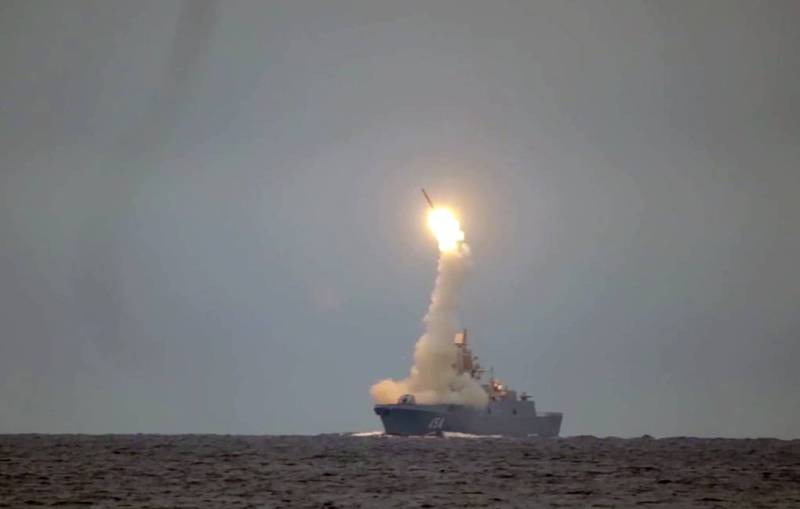The Russian Defence Ministry has published a video of the launch of a Zircon hypersonic cruise missile from the frigate Admiral Gorshkov in the White Sea. The hipersonic missile reportedly flew a distance of 450 km. in four and a half minutes, during which it reached a speed of over Mach 8. The footage shows a rocket starting up from an open launch container situated on the upper deck of the ship’s bow, circling in the air and flying towards its target in the Barents Sea. Testing of the Zircon began in 2015, with nearly a dozen launches completed by 2018. President Putin mentioned the Zircon in his 2018 speech to parliament as one of the main strategic systems capable of evading American missile defences and thus guaranteeing Russia’s response capability.
Russian President Vladimir Putin has hailed the successful test of a Zircon missile, stating it was an important event for the country and contributes to the nation’s security. He also expressed gratitude to all of the people involved in the project, thanking Defence Minister Sergei Shoigu and Chief of the General Staff of the Russian Armed Forces Valery Gerasimov as well. Putin made the statement after the military confirmed the successful completion of the test. “I would like to thank all of you for the work done, for its results and express hope that in the future all of the specialists involved in the rearmament of the Russian military will continue to work as efficiently and as persistently as it has done to this point”, the president said during a video meeting with the General Staff.
The 3M22 Zircon also spelled as 3M22 Tsirkon (NATO reporting name: SS-N-33) is a scramjet powered maneuvering anti-ship hypersonic cruise missile currently in testing by Russia. Zircon is believed to be a maneuvering, winged hypersonic cruise missile with a lift-generating center body. A booster stage with solid-fuel engines accelerates it to supersonic speeds, after which a scramjet motor with liquid-fuel (Decilin ) in the second stage accelerates it to hypersonic speeds. The missile’s range is estimated to be 135 to 270 nautical miles at low level, and up to 400 nmi in a semi-ballistic trajectory; average range is around 400–450 km.
Zircon can travel at a speed of Mach 8–Mach 9. According to some sources, such high speeds would likely create a cloud of plasma around the missile, absorbing any radio waves and making the missile virtually invisible to radars. This has led to concerns that it could penetrate existing naval defense systems. Zircon exchanges information in flight and can be controlled by commands if necessary. Zircon will be first deployed with the Kirov-class battlecruisers Admiral Nakhimov and Pyotr Velikiy after 2020. The ships will have their P-700 Granit anti-ship missiles replaced with the 3S-14 universal VLS cells capable of carrying the Oniks, Kalibr and Zircon anti-ship cruise missiles.











